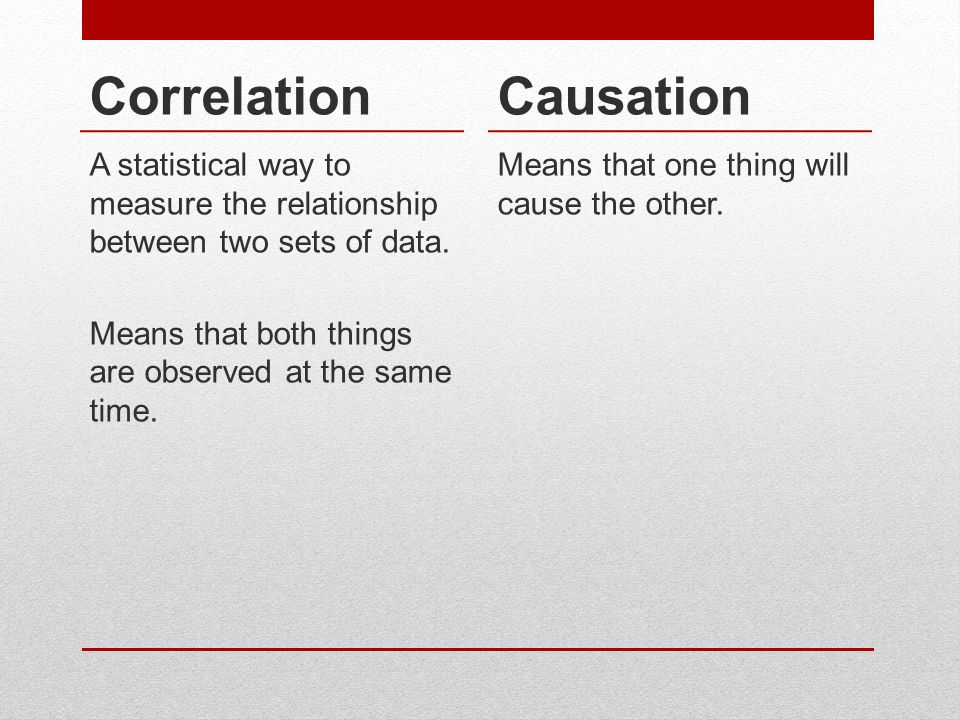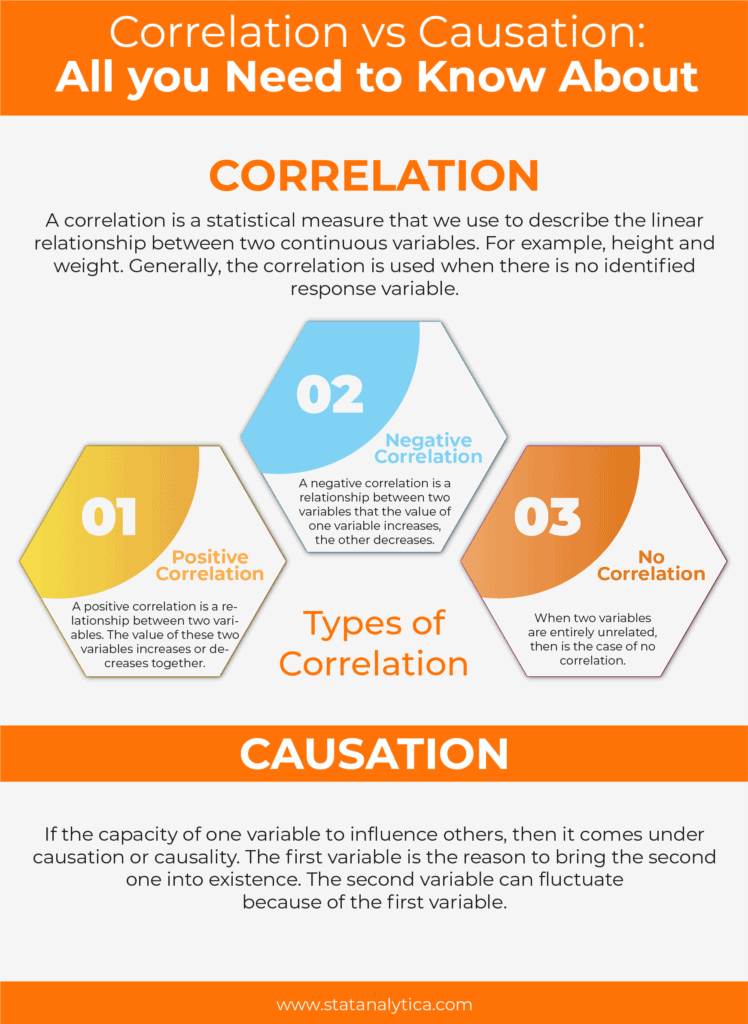
This is also referred to as cause and effect. We quantify causality by using the notion of the causal relation introduced by Granger Wiener 1956.

A First Definition of Statistical Causality.
Definition of causation in statistics. Causation indicates a relationship between two events where one event is affected by the other. In statistics when the value of one event or variable increases or. Causation indicates that one event is the result of the occurrence of the other event.
There is a causal relationship between the two events. This is also referred to as cause and effect. Definition Causality We will speak of causality if there is an interdependence of cause and effect between two variables.
Correlation can indicate causal relationships. A person who is a heavy. Causality is that the area of statistics thats commonly misunderstood and misused by people within the mistaken belief that because the info shows a correlation that theres necessarily an underlying causal relationship.
Causation means that one event causes another event to occur. Causation can only be determined from an appropriately designed experiment. In such experiments similar groups receive different treatments and the outcomes of each group are studied.
What is the definition of causation versus correlation. The Australian Bureau of Statistics provides a great definition of correlation. It is a statistical measure expressed as a number that describes the size and direction of a relationship between two or more variables.
In statistics which of the following does NOT explain causation. A term to indicate one thing causes another to change it is cause and effect when the value of one event increases due to another. Probabilistic Causation designates a group of theories that aim to characterize the relationship between cause and effect using the tools of probability theory.
The central idea behind these theories is that causes change the probabilities of their effects. A First Definition of Statistical Causality. We quantify causality by using the notion of the causal relation introduced by Granger Wiener 1956.
Granger 1969 where a signal X is said to Granger-cause Y if the future realizations of Y can be better explained using the past information from X and Y rather than Y alone. Association is a statistical relationship between two variables. Two variables may be associated without a causal relationship.
For example there is a statistical association between the number of people who drowned by falling into a pool and the number of. 1 The action of causing something. But if you put it on that basis your causation has not necessarily been determined.
Rather liability for injuries has been extended beyond any reasonable definition of causation. A jury could reasonably decide that causation had been established given the evidence. Causality is not a statistical or probabilistic concept at all at least as those topics are normally taught.
There is no statistical or probabilistic definition of causality. Nothing involving conditional expectations or conditional distributions or suchlike. It is hard to pick up this fact from courses in statistics or econometrics though.
Determining causality is never perfect in the real world. However there are a variety of experimental statistical and research design techniques for finding evidence toward causal relationships. Eg randomization controlled experiments and predictive models with multiple variables.